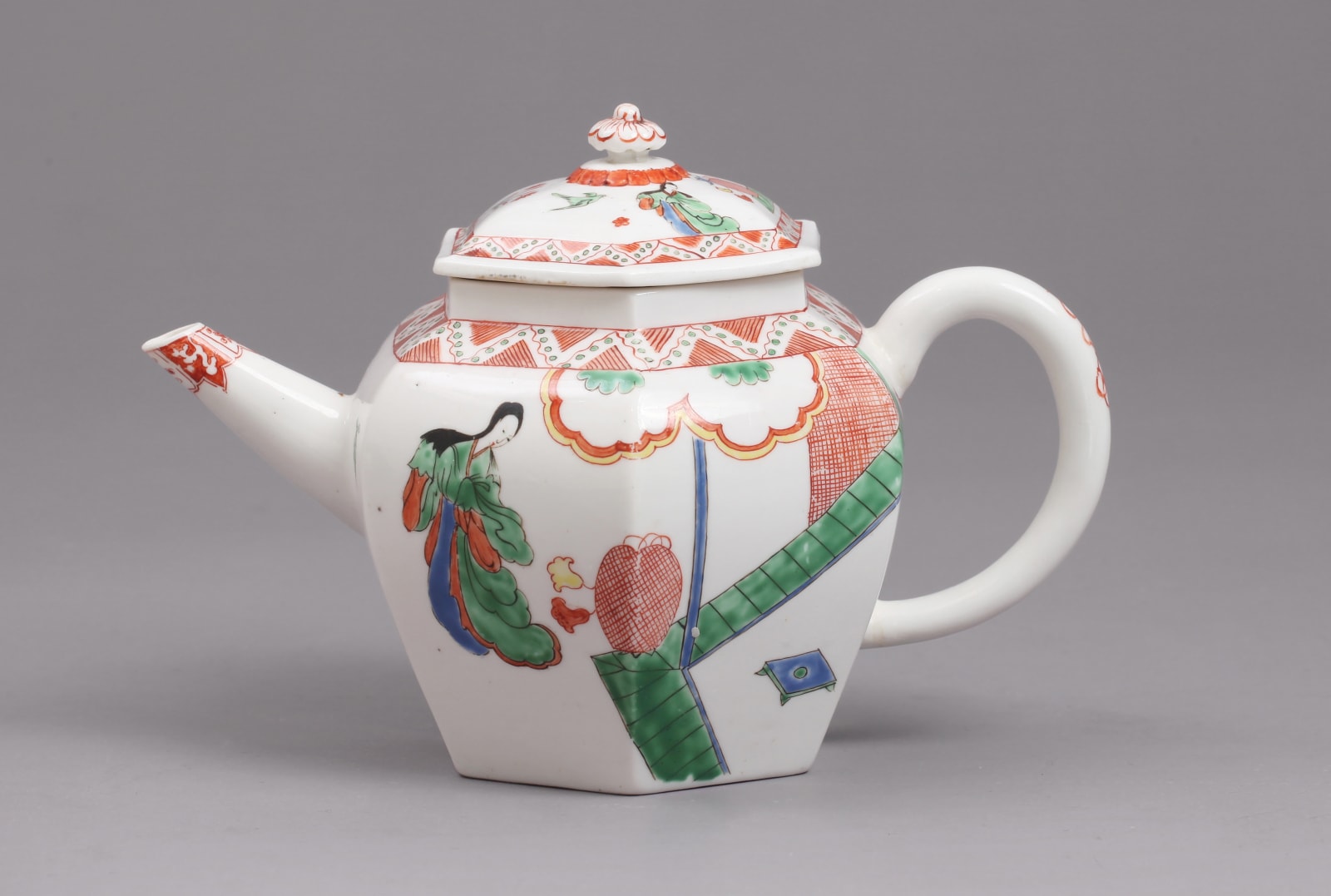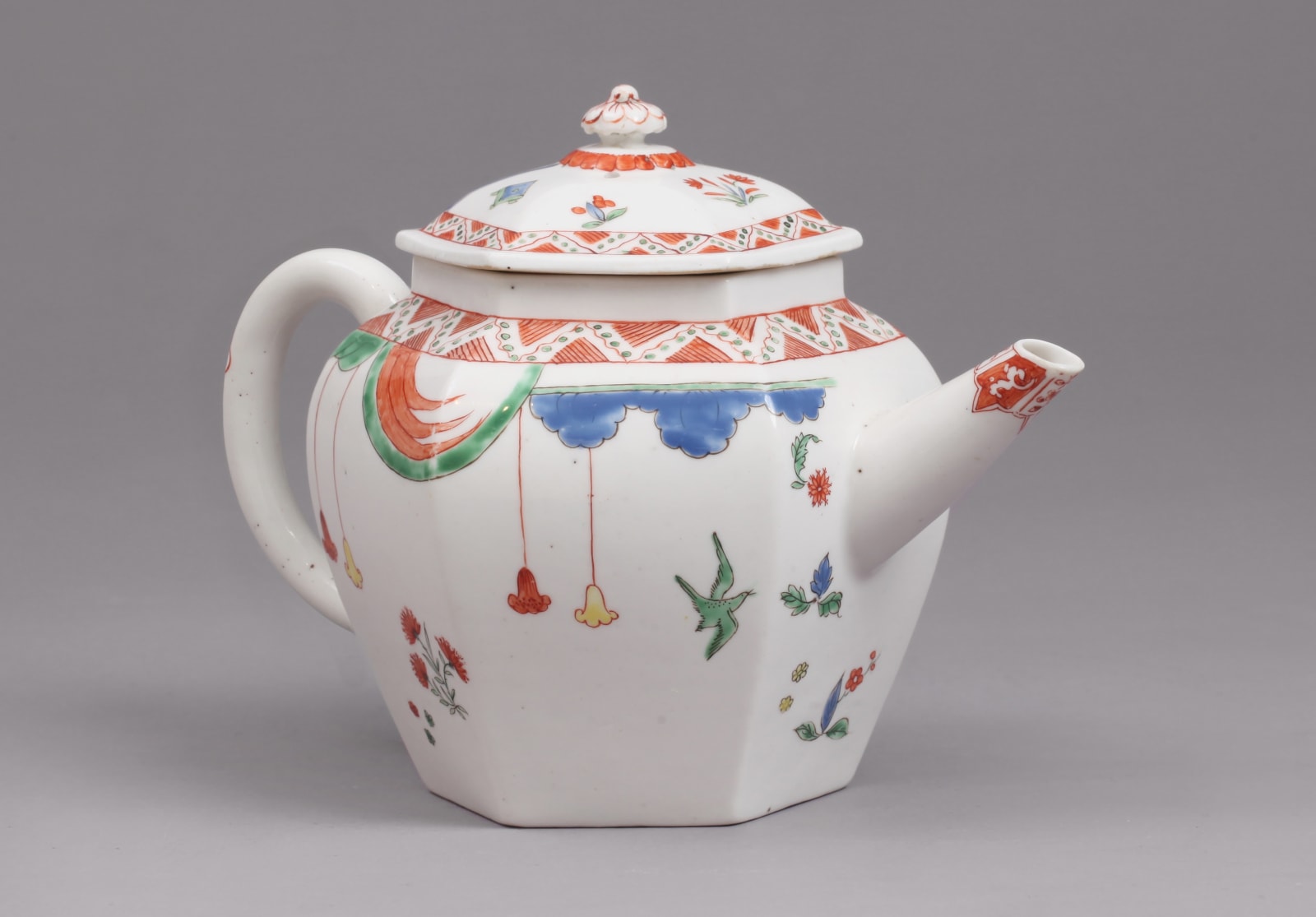

An Extremely Rare and Important Chelsea Porcelain Hexagonal Teapot and Cover, Circa 1749-52
An Extremely Rare and Important Chelsea Porcelain Hexagonal Teapot and Cover, with applied loop handle and straight spout, painted in bold Kakiemon colours in tones of iron red, blue, yellow and sea-green with the ‘Lady in a Pavilion’ pattern, showing a Japanese Lady wearing a brightly coloured kimono beside a hassled birdcage set up on a deep turquoise shelf under the scalloped canopy of a pavilion, framed within a border of a turquoise seeded garland reserved on a hatched iron red ground, the cover and tip of the spout with further stylised formal decoration. The hexagonal cover with an identically decorated scene beneath an applied flower finial.
The Raised Anchor Period of Manufacture at Chelsea, with pieces dating from 1749-52, is characterised on the whole by a complete departure from the Silver taste blending with Chinoiserie established in the Incised Triangle Period. The Manufactory moved to Lawrence Street, a bigger premises to facilitate demand and developed a ‘New and improved paste’. Nicholas Sprimont celebrated this with a re-launch and new advertisement on the 9th January 1750 in the ‘Daily Advertiser’, that his forthcoming Spring Sale would include, ‘different forms and patterns and of a great variety of Pieces for Ornament in a taste entirely new.’
The characteristics of this new and improved paste are diverse, the addition of more lime and less lead made the paste more pliable. The addition of tin oxide makes the pieces slightly whiter than before and more refined and altogether softer. There is a wonderful characteristic which appears in the paste of the Raised Anchor wares of this period, that of ‘moons’, they are rather magical and beguiling and appear within the paste with transmitted light. The ‘moons’ are in fact air bubbles trapped in the paste and these are the very hall marks of Nicholas Sprimont’s ‘new and improved body’ and they are hugely admired by Collectors. The ‘Entirely New’ taste is usually described as a departure from the Chinoiserie of the earlier Triangle marked pieces, to that of the Japanese inspired patterns, newly seen from those pieces similarly decorated from Meissen that had begun to reach these shores. There can be no other pattern that exemplifies this Japanese style than the ‘Lady in a Pavilion’ pattern. Dinner wares that are recorded with this pattern have a bluer blue than the very rare tea wares, which have a greener blue characteristic of the enamel. The Kakiemon style, as interpreted on Chelsea porcelain, is one of the foremost achievements of the manufactory, worthy of comparison with the beautiful early Chantilly wares and adding a lustrous tactile dimension to the Meissen patterns from which Sprimont drew his interpretation.
Provenance: The Redfern, Shand Kydd and Private Collections.
Provenance
The Redfern, Shand Kydd, C.E. Hanley and Private Collections.Join our mailing list
* denotes required fields
We will process the personal data you have supplied in accordance with our privacy policy (available on request). You can unsubscribe or change your preferences at any time by clicking the link in our emails.

